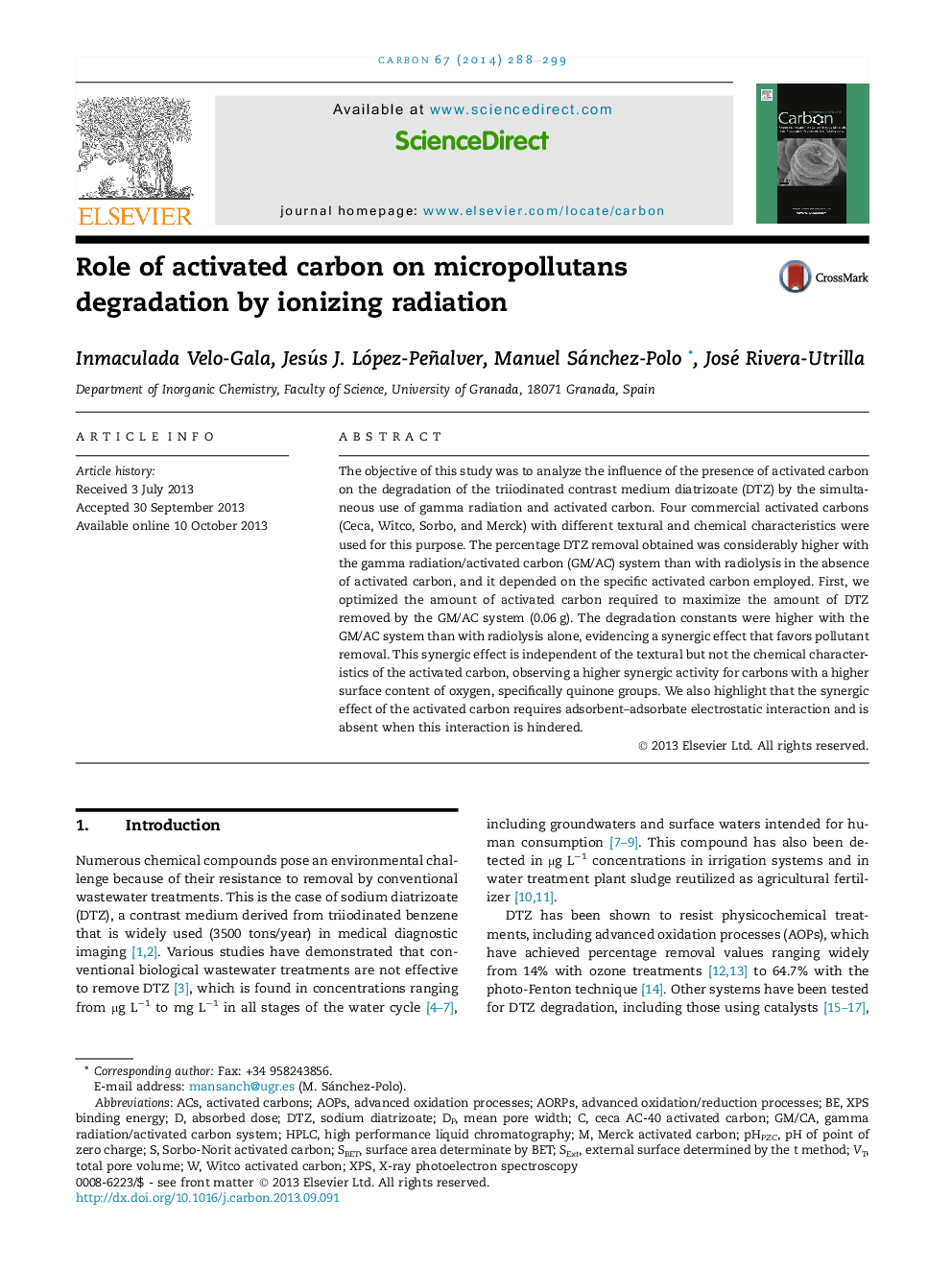| Article ID | Journal | Published Year | Pages | File Type |
|---|---|---|---|---|
| 7854993 | Carbon | 2014 | 12 Pages |
Abstract
The objective of this study was to analyze the influence of the presence of activated carbon on the degradation of the triiodinated contrast medium diatrizoate (DTZ) by the simultaneous use of gamma radiation and activated carbon. Four commercial activated carbons (Ceca, Witco, Sorbo, and Merck) with different textural and chemical characteristics were used for this purpose. The percentage DTZ removal obtained was considerably higher with the gamma radiation/activated carbon (GM/AC) system than with radiolysis in the absence of activated carbon, and it depended on the specific activated carbon employed. First, we optimized the amount of activated carbon required to maximize the amount of DTZ removed by the GM/AC system (0.06Â g). The degradation constants were higher with the GM/AC system than with radiolysis alone, evidencing a synergic effect that favors pollutant removal. This synergic effect is independent of the textural but not the chemical characteristics of the activated carbon, observing a higher synergic activity for carbons with a higher surface content of oxygen, specifically quinone groups. We also highlight that the synergic effect of the activated carbon requires adsorbent-adsorbate electrostatic interaction and is absent when this interaction is hindered.
Keywords
Related Topics
Physical Sciences and Engineering
Energy
Energy (General)
Authors
Inmaculada Velo-Gala, Jesús J. López-Peñalver, Manuel Sánchez-Polo, José Rivera-Utrilla,
